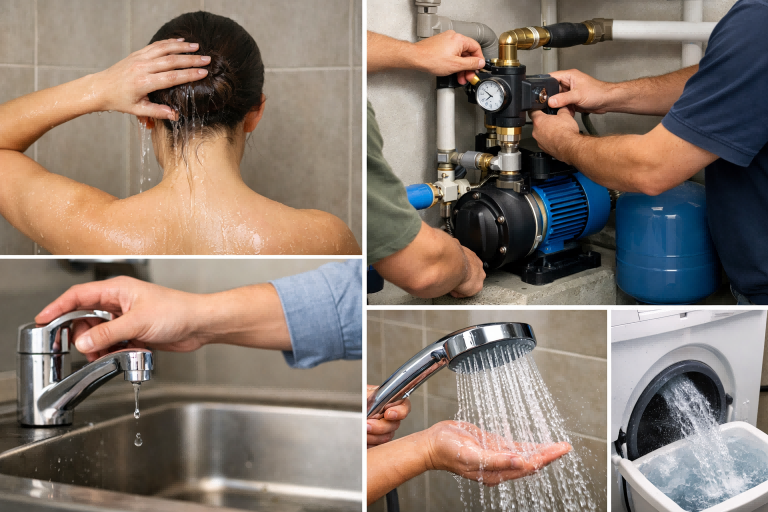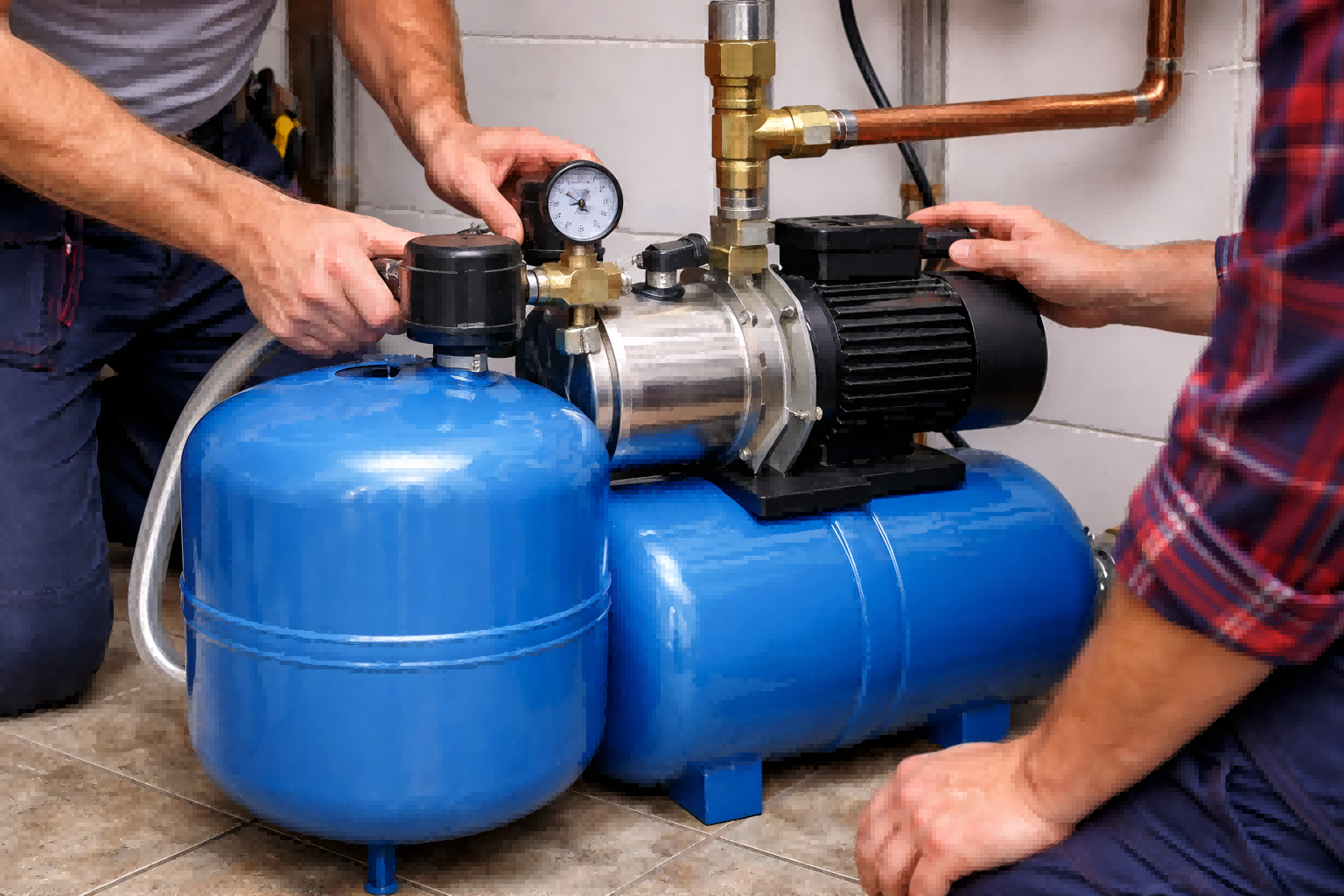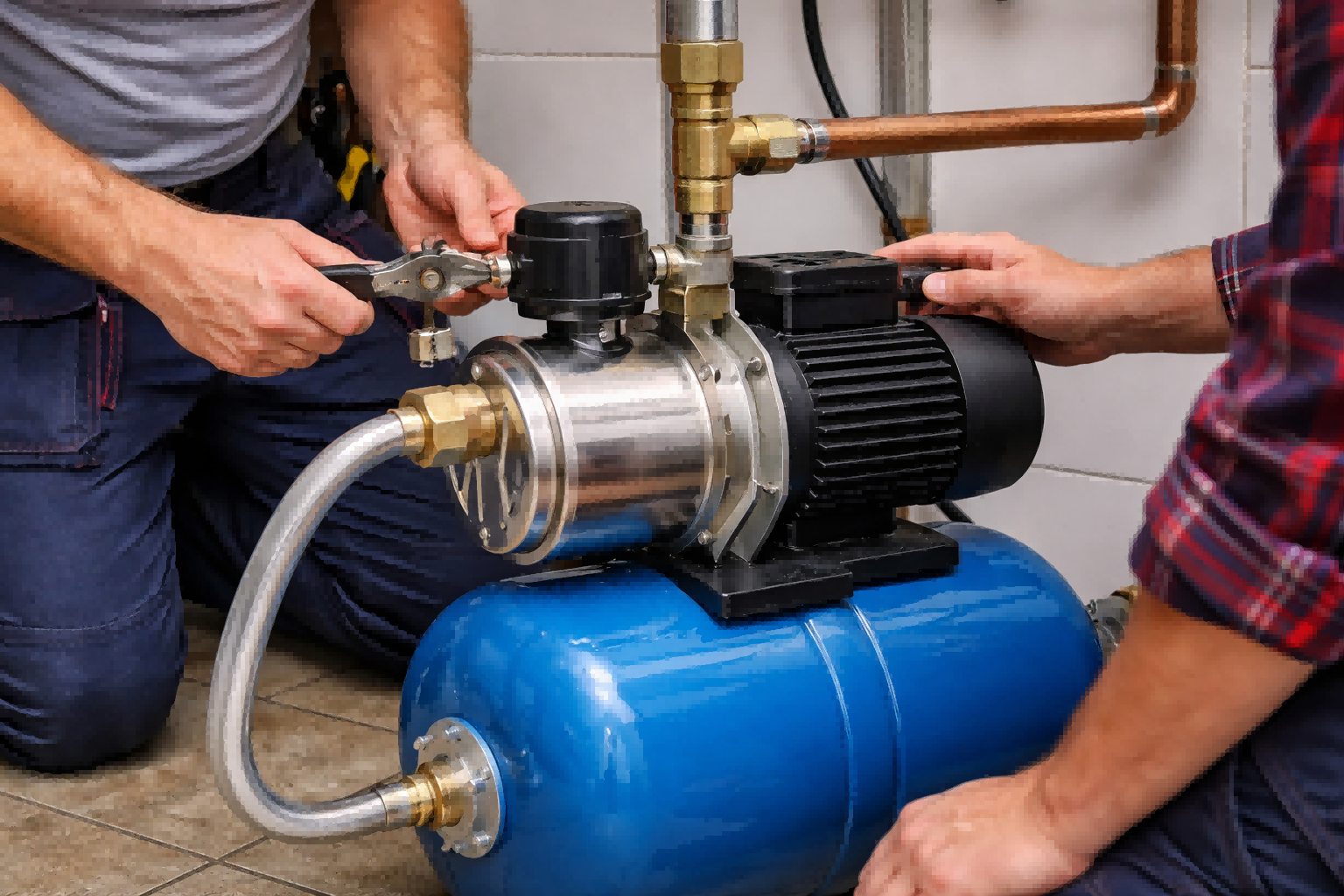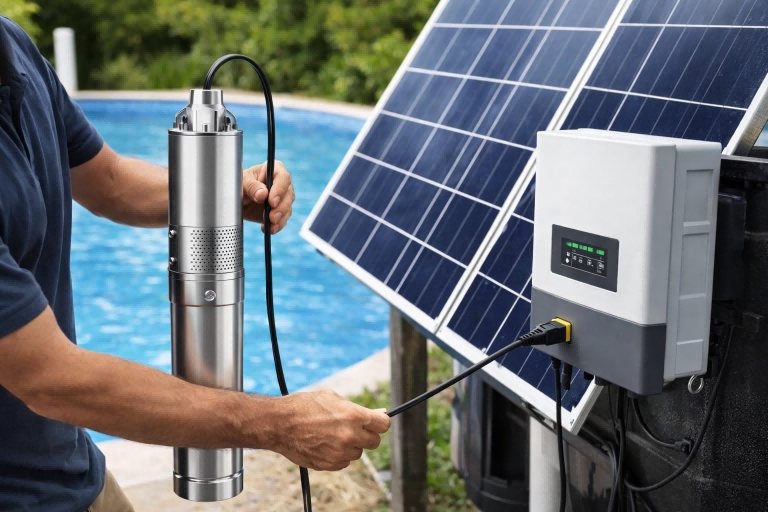Struggling with weak, inconsistent water pressure in your building?
This frustrating problem can lead to poor shower performance and inefficient appliances.
A twin booster pump system is your solution.
It uses two pumps working in parallel to deliver strong, constant water pressure, automatically adjusting to your building's needs for ultimate efficiency and reliability.
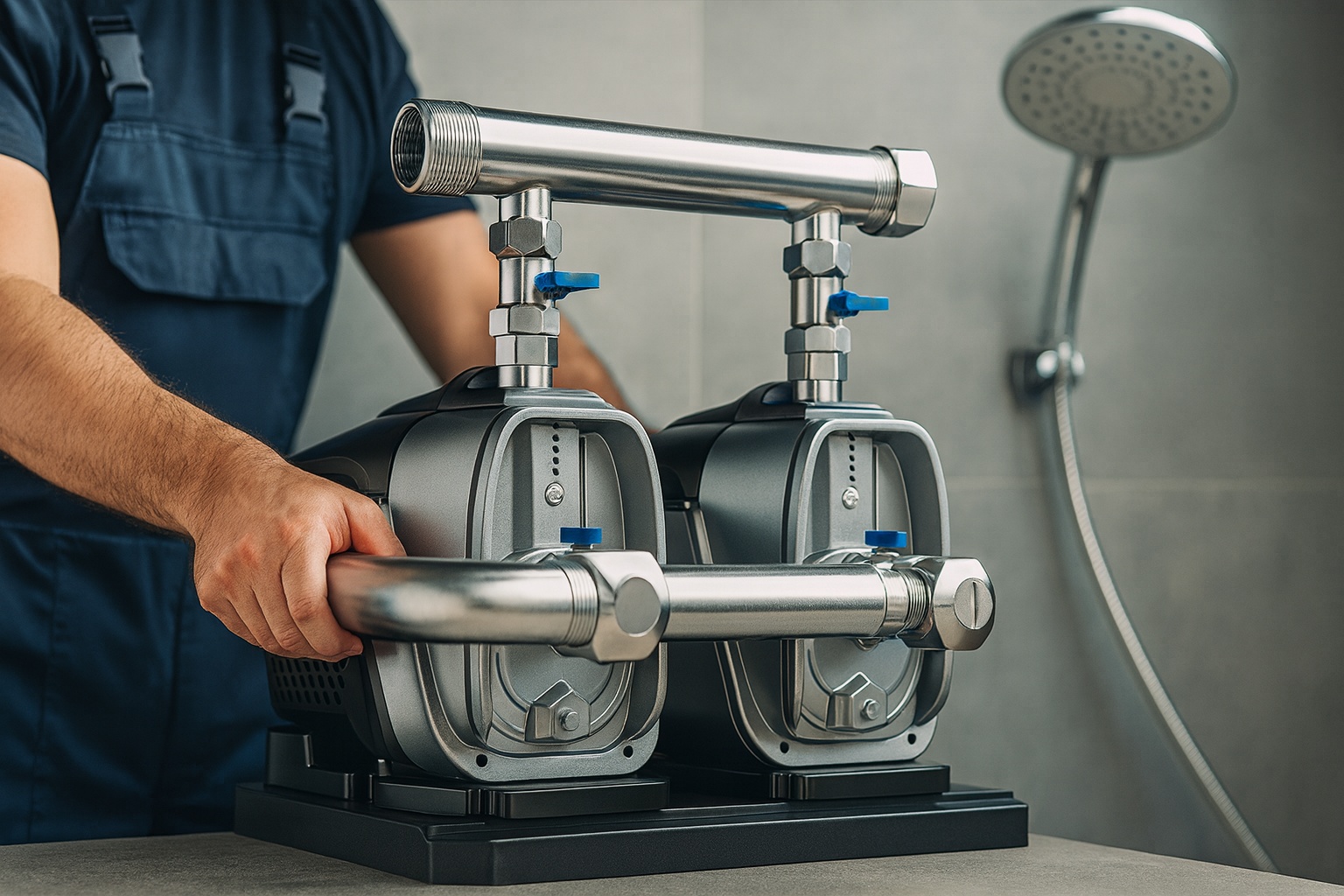
Dealing with fluctuating water pressure is more than just an annoyance; it's a sign that your water system can't keep up with demand.
For larger homes, commercial buildings, or industrial facilities, a single pump often isn't enough to provide the consistent flow needed for all applications.
This can result in disruptions, decreased productivity, and wear on your plumbing.
Fortunately, modern engineering provides a powerful and intelligent solution.
By understanding how these advanced systems operate, from their core motor technology to their sophisticated control systems, you can see how they eliminate pressure problems for good.
Let's explore the key components that make these pumps a superior choice for any demanding water supply application.
The Core Technology Driving Modern Booster Pumps
Tired of pumps that are noisy and inefficient?
These outdated systems can drive up energy bills and create a disruptive environment.
The solution lies in a smarter core technology.
Modern booster pumps use a Permanent Magnet Synchronous Motor (PMSM) combined with a Variable Frequency Drive (VFD), delivering ultra-quiet, energy-efficient performance that maintains perfect, constant pressure.
The true innovation in today's booster pumps isn't just about raw power; it's about intelligent control.
The combination of a VFD and a PMSM represents a significant leap forward from traditional pump designs.
This pairing allows the pump to precisely match its output to the real-time water demand of the building.
Instead of running at a fixed, high speed all the time, the motor's speed is constantly adjusted.
This dynamic operation not only saves a tremendous amount of energy but also dramatically reduces noise and mechanical stress on the entire system.
Let's break down how each of these core components contributes to this superior performance and what it means for your water system's reliability and efficiency.
The Power of Variable Frequency Drives (VFD)
A VFD acts as the pump's brain.
It takes the incoming electrical supply and modifies its frequency.
By changing the frequency, it can control the motor's speed with incredible precision.
When water demand is low, the VFD slows the motor down, saving energy.
When demand spikes, it instantly speeds the motor up to maintain constant water pressure throughout the plumbing system.
This prevents the pressure drops and surges common with older, fixed-speed pumps.
This intelligent management is the key to both energy savings and consistent user comfort.
The Efficiency of Permanent Magnet Synchronous Motors (PMSM)
The PMSM is the heart of the system, providing the muscle.
Unlike standard induction motors, a PMSM uses high-strength permanent magnets in its rotor.
This design eliminates the need for energy to magnetize the rotor, making the motor inherently more efficient.
It generates less heat, operates more quietly, and can maintain its efficiency across a wide range of speeds.
When paired with a VFD, the PMSM provides powerful, responsive, and reliable performance that translates directly into lower operating costs and a longer service life for the pump.
Key Performance Benefits
The synergy between VFD and PMSM technology delivers a range of tangible benefits that set these pumps apart from conventional models.
These advantages impact everything from the user experience to the system's overall longevity and cost of ownership.
| Feature | Description | Advantage |
|---|---|---|
| Silent Operation | The smooth speed control of the VFD and the efficient design of the PMSM result in noise levels under 50dB. | Creates a quiet environment, making it suitable for installation in residential and commercial buildings without causing disruption. |
| Constant Pressure | The VFD constantly monitors system pressure and adjusts motor speed to precisely meet water demand. | Eliminates frustrating pressure fluctuations, ensuring a steady and reliable water supply for all fixtures and appliances. |
| Soft Start & Stop | The VFD technology gradually ramps the motor's speed up and down during operation cycles. | This reduces mechanical stress on the pump and pipes, prevents hydraulic shock (water hammer), and extends the system's lifespan. |
Engineering for Durability and Long-Term Reliability
Worried about your pump failing prematurely due to harsh conditions?
Many pumps break down from moisture damage, corrosion, or overheating.
You need a solution built to last.
Top-tier booster pumps are engineered with premium, corrosion-resistant materials and feature fully sealed electronics, ensuring exceptional durability and a significantly longer operational lifespan.
A pump's performance is only as good as its construction.
While intelligent controls and efficient motors are crucial, the physical materials and protective measures used in a pump's design determine its ability to withstand the test of time.
This is especially true for water systems, where components are constantly exposed to moisture, temperature changes, and mechanical stress.
A commitment to quality engineering is evident in the careful selection of materials for every part of the pump, from the housing and internals to the sensitive electronic controls.
By focusing on robust, resilient construction, these systems are designed not just to perform, but to endure, providing reliable service for years to come.
Choosing the Right Materials
The longevity of a booster pump starts with its core components.
Using high-grade materials is essential for preventing corrosion and ensuring structural integrity over millions of operating cycles.
Every material is selected for its specific properties and ability to handle demanding conditions, from the water-contacting parts to the external housing.
| Component | Material | Key Benefit |
|---|---|---|
| Impeller | AISI 304 Stainless Steel or Brass | Offers excellent resistance to corrosion and wear, ensuring long-term hydraulic performance and water purity. |
| Housing | UV-Resistant ABS Plastic | Protects the internal components from environmental factors and sun damage, preventing the material from becoming brittle over time. |
| Bearings | Premium Brands (e.g., NSK/C&U) | High-precision bearings reduce friction and operational noise while offering a significantly longer lifespan compared to standard alternatives. |
Protecting the Electronics: The IP67 Sealed Core
One of the most common points of failure in modern pumps is the electronic controller.
Moisture, dust, and condensation can easily damage sensitive printed circuit boards (PCBs).
To solve this, leading designs employ a technique called PCB potting.
The entire controller board is fully encapsulated in a durable, waterproof resin.
This creates an impenetrable, 100% waterproof seal that achieves an IP67 protection rating.
This single feature can prevent over 95% of moisture-related electronic failures, effectively extending the controller's lifespan by 3 to 5 years and ensuring the pump's "brain" is completely protected from the harsh environment it operates in.
Advanced Cooling and Thermal Management
Heat is another major enemy of motors and electronics.
Efficient heat dissipation is critical for maintaining performance and preventing premature failure.
Top-tier booster pumps incorporate advanced cooling designs.
This includes aerodynamically optimized fan blades and housings that improve airflow by over 15%.
Paired with a high-efficiency heat dissipation structure, this ensures the motor remains cool even under heavy loads.
Superior thermal management, indicated by a low temperature rise (≤50K), directly translates to a longer, more reliable operational life for the entire pump unit.
Smart Protections: A Comprehensive Safety System
Concerned that a hidden issue like a small leak or a power surge could damage your pump?
Without smart monitoring, these problems can lead to catastrophic failure and costly repairs.
Intelligent booster pumps solve this.
They feature a built-in suite of up to 14 different protection functions that actively monitor the system, predict faults, and automatically safeguard the pump from damage.
A truly modern booster pump is more than just a motor and an impeller; it is an intelligent device designed for self-preservation.
The most advanced systems are equipped with a comprehensive suite of protection functions that act like a constant watchdog over the pump’s-operation.
This "14-shield" system continuously monitors a wide range of electrical, thermal, and hydraulic parameters.
If it detects an abnormal condition—such as a voltage spike, a potential dry run, or an overheating motor—it can take immediate corrective action.
This proactive approach prevents minor issues from escalating into major failures, ensuring the pump's reliability and providing peace of mind for the property owner.
Electrical and Thermal Safeguards
The pump’s control system is designed to protect it from a host of electrical and heat-related problems.
These safeguards are essential for reliable operation, especially in areas with unstable power grids or high ambient temperatures.
- Voltage Protection: Automatically shuts down if input voltage is too high or too low.
- Overcurrent Protection: Prevents damage from electrical surges.
- Phase Loss Protection: Safeguards the motor in three-phase systems.
- Stall Protection: Detects if the motor is blocked and stops it to prevent burnout.
- Overheating Protection: Monitors both the driver board and motor temperature to prevent heat damage.
System and Hydraulic Protections
Beyond electrical safety, the pump also protects itself from hydraulic and system-level issues.
These functions prevent the most common causes of mechanical pump failure.
One of the most critical protections is for water shortages, often called dry run protection.
If the pump detects no water, it doesn’t just shut off; it initiates an intelligent multi-stage recovery algorithm.
It will try to self-prime for a few minutes, then rest.
If water doesn’t return, it extends the rest period to conserve energy while periodically re-checking, ensuring it can resume operation automatically once the water supply is restored.
| Protection Type | What It Does | Why It's Important |
|---|---|---|
| Dry Run Protection | Senses a lack of water and stops the pump, then periodically re-checks. | Prevents the pump from burning out its motor and seals, which can happen in seconds when run without water. |
| Antifreeze Protection | Automatically runs the pump for short intervals if the temperature drops near freezing. | Prevents water inside the pump from freezing and expanding, which can crack the pump housing and cause severe damage. |
| Pipeline Leak Warning | Detects very small, continuous flows that indicate a potential leak in the plumbing. | Alerts the user to a hidden issue, saving water and preventing potential water damage to the property. |
Intelligent Operation: How Twin Booster Systems Work Together
Is a single pump not enough to handle your building's peak water demand?
Trying to meet high flow requirements can overwork a single pump, leading to inefficiency and premature failure.
A twin booster system is the perfect upgrade.
It intelligently uses two pumps in parallel, activating the second pump only when needed and alternating their usage to ensure even wear, providing powerful, reliable, and efficient water pressure on demand.
For applications with widely varying water demands, such as multi-story buildings, hotels, or industrial processes, a single pump is often a compromise.
It might be oversized for low-demand periods, wasting energy, or undersized for peak periods, failing to deliver adequate pressure.
A twin booster system eliminates this compromise.
It consists of two pumps connected by a manifold and managed by an intelligent controller.
This setup provides both power and efficiency.
The system can operate a single pump for normal usage and automatically bring the second pump online to meet high demand.
This not only ensures constant pressure at all times but also enhances reliability and extends the lifespan of the entire system.
What is Cascade Control?
Cascade control is the primary operating logic behind a twin booster system.
The system's pressure sensor constantly monitors the water pressure in the discharge manifold.
When water demand starts to increase, the first pump (the lead pump) will speed up to maintain the set pressure.
If demand continues to rise to a point where the lead pump is operating at or near its maximum capacity but still can't maintain the pressure, the controller automatically starts the second pump (the lag pump).
Both pumps then work together, or "in cascade," to meet the high flow requirement.
Once demand decreases, the lag pump is shut down, and the lead pump returns to handling the load on its own.
This ensures that energy is only used when absolutely necessary.
The Importance of Pump Alternation
To ensure that both pumps in the system receive equal amounts of use over their lifetime, an intelligent controller will regularly alternate which pump serves as the lead pump.
This feature, known as pump alternation, is critical for maximizing the system's longevity.
Without it, one pump would accumulate far more operating hours than the other, leading to uneven wear and the premature failure of the primary unit.
The controller can be programmed to switch the lead pump based on a set number of operating hours or after a certain number of start/stop cycles.
This balanced approach ensures that both pumps wear down at roughly the same rate, simplifying maintenance schedules and improving overall system reliability.
Linking Pumps for Maximum Output and Redundancy
A key advantage of a twin booster system is the built-in redundancy.
If one pump needs to be taken offline for maintenance or fails unexpectedly, the other pump can continue to supply water to the building.
While it may not be able to handle extreme peak demand on its own, it can typically satisfy essential and normal usage, preventing a complete shutdown of the water supply.
This fail-safe capability is crucial for critical applications like hospitals, hotels, and residential high-rises where a loss of water is unacceptable.
The smart link mode ensures that if the lead pump fails, the lag pump is instantly activated to take its place, providing an uninterrupted and reliable water supply.
Conclusion
Twin booster pump systems offer a powerful, intelligent, and reliable solution for overcoming poor water pressure.
By combining advanced motor technology with smart controls and durable engineering, they deliver unmatched performance and efficiency.
Frequently Asked Questions
What is the main advantage of a twin booster pump?
The main advantage is its ability to efficiently handle a wide range of water demands. It provides reliability through redundancy, ensuring water supply even if one pump fails.
Are twin booster pumps noisy?
No, modern twin booster systems using VFD technology and PMSM motors are very quiet. They often operate at less than 50 decibels, which is quieter than a normal conversation.
How does a booster pump system save energy?
It saves energy by using a Variable Frequency Drive (VFD) to adjust the motor speed. The pump only runs at the speed needed to meet demand, reducing electricity consumption significantly.
Can a twin booster system handle hot water?
Yes, many high-quality booster pumps are designed to handle hot water. They are often suitable for temperatures up to 75°C (167°F), making them ideal for solar heating systems.
What is pump alternation?
Pump alternation is a feature where the control system switches which pump acts as the primary unit. This ensures both pumps get equal use, promoting even wear and extending their lifespan.
What happens if one pump in a twin system fails?
If one pump fails, the smart controller automatically relies on the second pump. This built-in redundancy ensures the building's water supply continues with minimal or no interruption.
Is professional installation required for a booster pump?
Yes, professional installation is highly recommended. Proper setup ensures the system operates safely and efficiently and is correctly integrated with your existing plumbing.
How does a booster pump protect against dry running?
Intelligent pumps have sensors that detect a lack of water. The system will automatically shut down to prevent damage and will periodically re-check until the water supply is restored.


